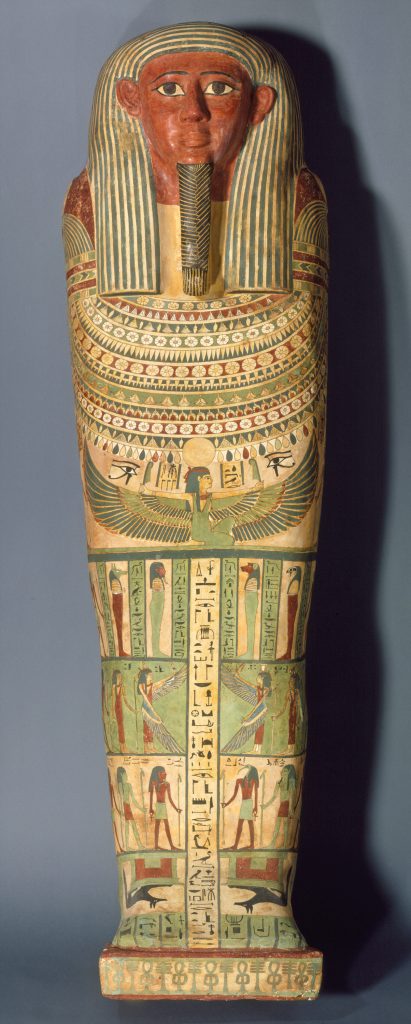NCMA Explore: Coffin of Amunred (NCMA Explore Resource)
Make a copy of this resource in slide form!
About the Culture
In Egyptian history the era called the Third Intermediate-Late Period came 1,900 years after the Great Pyramids of Giza were built. At that time Egypt was ruled by nonnative Egyptians and engaged in conflict with Assyria (modern-day Iraq) and parts of neighboring countries.
About the Object
This is an anthropoid (body-shaped) coffin for the mummy of an upper-class man named Amunred. Amunred is shown with idealized features, reddish-brown skin, and a “divine” wig and beard of blue and white stripes. Images from nature decorate the top half, and underworld deities cover the bottom half.
Look Closely
- Amunred’s coffin is covered with symbolic colors and images.
- What colors can you identify?
- What pictures do you see that might have symbolic meaning?
- The images on the coffin vary in size. List what you see in order from largest to smallest. Why do you think there is a variety in size on the coffin?
Discuss
- The coffin is decorated with hieroglyphic texts and images that protect the remains of the deceased. What do you know about the funerary practices of ancient Egypt? What does Amunred’s coffin demonstrate? What do you know from other sources?
- Amunred’s mummy coffin is empty. It was sold to the NCMA by a gallery in France in 1973. What do you know about archaeology? What do you think happened to Amunred’s mummy and coffin between 715–525 bce and 1973? How did the coffin survive so long? Why do you think we have more mummy coffins than mummies in museums?
Reflejar
This coffin shows an idealized version of Amunred instead of being an actual portrait. This ancient virtual makeover was common practice and helped prepare the deceased for an afterlife in a more perfect world than the current reality. What are some of the ways deceased people, from family members to celebrities, are honored, celebrated, and idealized today?
Learn more
Visit the “Learn More” sidebar to find more information about the object and culture.

